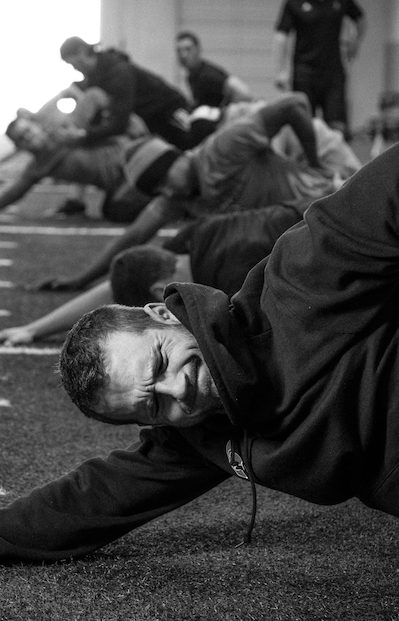
The efficacy of rolling out has been a hot button topic of late. There are arguments citing loss of power after rolling and claims that we cannot physiologically manipulate fascia. People are questioning whether we understand mechanisms of fascial release, and so on. So is it a waste of time?
It all boils down to intent. Why are you rolling out? Are you trying to increase joint ROM, increase body temp pre-session, acutely prime for power in-session? Depending on what your intent is, rolling out may in fact be coming up short for you. We roll out in every training session in order to:
Correct body position
Increase elasticity
Teach athletes to take ownership of their training via self-care.
Although the mechanisms are not clearly understood, it is without question that fascial manipulation has an observable response on movement pattern / body position. Whether those improvements come from reorganization of the fascia, an increase in pain tolerance, or a surge of hormones – does it really matter? At the end of the day, we aren’t even 100% sure how a muscle contracts; the sliding filament theory is still just a theory.

An athlete’s jump height and sprint speed can’t be fully explained by looking at the force contraction of the muscles. The tension stored within the fascia and tendons account for the output not explained by muscular activation. Young and healthy fascia has a “two-directional lattice arrangement” (1). But as we age and or take on stress we lose our ‘springiness’; the fiber arrangement is altered and becomes more multi-directional. The fibers of the fascia become stuck together to form adhesions, which inhibits those prized elastic qualities. Myofascial release works to break down adhesions to restore a more youthful facial architecture.
Just as important as rolling out is to improving movement quality is the culture and habits it creates. Making a habit of rolling out is teaching athletes to take ownership over self care. The vast majority of athletes aren’t going to have access to regular massage / manual therapy, but most trigger points / adhesions can be released through self manipulation (if they know how to roll out effectively). Teaching athletes proper self care (nutrition, sleep, tissue health) will have a much longer lasting impact on their lives than teaching them to perform a Turkish get-up.
Stay tuned in the coming weeks for our thoughts on effective self release tools, targets, and techniques…
1. Staubesand, J., Baumbach, K.U.K., Li, Y., 1997. La structure find de l‘apone´vrose jambie´re. Phlebologie 50, 105e113